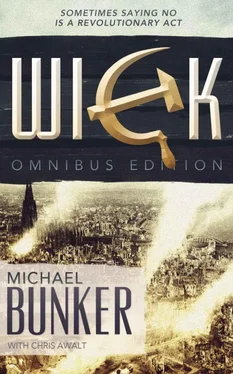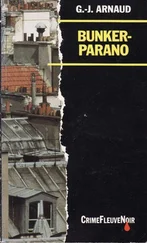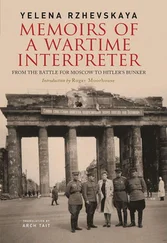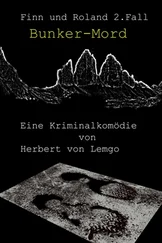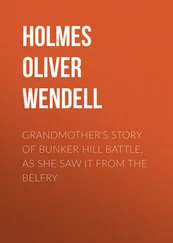Veronica stood there; her long black braids hung in a tied up knot of a rope that draped beautifully over her shoulder, and her dark skin stood in sharp contradistinction to the palette of the room… shockingly so.
To everyone else in the room, her face looked thoughtful, and beautiful, and restful, all at once. It had an angular simplicity. The face echoed in the face of the body on the bed— and both stood in sharp contrast against the paler, whiter faces of the Stolzfus family, and it was all part of the contrast that was impressed upon her mind.
In that moment, Veronica D’Arcy found peace.
A part of her left with Stephen. That’s the only way to say it. His body was lying on the bed in front of her, and she stood over him and let go of something. It was as if her art, her view of the world, her argument that simply by breathing in and out and viewing the world through the eyes of artful love that things must go well—all of that, simplywent. Her belief that looking at everything as merely art, and that this mindset would allow her to live satisfactorily in the world, flew away with her son.
That antiquated view had helped her when John died. Then, she still had Stephen to hold onto, to help her hold that focus. And of course back then, the world was still intact. Whenever she looked into her son’s face, she would see John, experiencing her husband anew in Stephen, seeing his habits coming alive in her son, his pleasures. But now, her art failed her. Or… it failed to be sufficient to sustain her. She looked down at Stephen and felt that part of her slip away. That view of life could work—it had worked—if and when an artificial system of life-support could be maintained for most of the world’s population. Absent that life-support system, life as only art, was insanity. It was dementia.
What she found instead, in its place, was reality . She experienced it with acceptance, and strength, and she found peace in it.
For Stephen’s sake, Veronica was glad that he’d gone on from this world.
Now, she looked down on her son, and in looking at him she did not analyze his color palette. She didn’t remark to herself about the intersecting lines of the sheets with the bed, or note how strange it was to see his musculature in harmony with the Amish severity of the place. Her normal artist’s eye was at rest. She looked at Stephen and she saw his father, and the life she’d once lived, and even though she was filled with love for her dead husband and son, she didn’t focus on any of that.
Instead, from somewhere (who knows where these things came from?), Veronica had a realization. It was as if she came to understand that a page had turned and that it was time to move on. She saw the whole of the page, and she recognized that Stephen’s death was a representation of what was going on everywhere in the world. She was not in a position at that moment to exhaustively understand the thought, and she could not give voice to everything that Stephen was in that moment, lying there dead in an Amish bed. Nevertheless, an outline of the understanding was there. Maybe Stephen represented naiveté. Maybe he stood for innocence. Maybe he was a symbol of Western, Industrial decadence. Whatever the case, his death represented a particular kind of ignorance; one that comes to be in a world that exists within a framework of artificial ease.
He was her boy, but he was the offspring of a life lived inauthentically . She’d tried to teach him to survive, but she’d started too late, and she’d never questioned the fundamental presuppositions of life and living. She’d tried to keep him by her own strength, only to find out that no one living has that power. No one can see all the filthy nails sticking out of all the hidden boards out there in the world.
She breathed in the air and felt relief, and peace, and the realness of the moment. She believed that it would lead to the next moment, and for now, that was enough.
She took a soft step backwards, and the Amish women took that motion as a signal. It was exactly that, a signal. The women moved past her and began their work, untying the boy from the bed. Veronica turned to Henry Stolzfus and nodded her head. The tears were flowing now, but not in an angry or violent way. She was not mad. The tears were marking her place, and she knew that when she stepped out of the room, she was going to be stepping fully into an entirely new world, a world where the veil of superficiality had been rent for her… for good.
Henry Stolzfus put an arm around Veronica and led her out of the bedroom.
She didn’t look back.
* * *
The Battle of Mount Joy had turned into a pivotal battle in the civil war that was now raging across Pennsylvania. This will not come as a surprise to anyone who’s been paying attention. For one thing, the detail itself seems positively necessary for the narrative arc of the story. All of the characters must meet up somewhere and events must occur someplace , and Mount Joy seems as good a place as any. It works from a topographical sense as well a historical one. It also works as a literary one. This will become clear as we go along but, for now, simply note that Mount Joy was special .
In this Civil War, the battle had become a high-water mark of sorts. It demarcated a particular line along a larger battlefield map. Some General, looking at a map of the area, might have searched with his finger, and put that finger on the map at a particular place where he could focus his resources in such a way that it would inflict maximum damage . That point was Mount Joy. It was central to the conflict.
It had a narrative arc all its own.
* * *
The collision of forces at Mount Joy was initiated by an intensive MNG offensive that was designed to push the FMA southward, across the Susquehanna River to York, and then, eventually, to push them out of Pennsylvania and into Maryland, and from there, into the South. That is a mind-bending amount of detail to take in.
The battle at hand was representative of a world gone mad with force, and unfolding events, in many ways, would mark the end of that world, at least for a time. During the peak of the battle, there was an uncountable torrent of bullets, and shells, and mayhem raining down on Mount Joy. Someone thought that this piece of real estate was important enough to destroy it utterly, but there was more to it. Much more. Even in the heat of battle, the observer must sometimes stop to smell the roses.
Anyone who has been paying attention, or anyone who knows anything of history or of literature, can appreciate the fact that there is a symbolic war going on between forces centered along the imaginary lines of a map demarcated by the invisible boundaries separating York and Lancaster Counties. One mustn’t be a Civil War buff to know that by taking out a pen and marking a trajectory that followed along the path of the extended conflict, the line would eventually pass into Gettysburg, and then dip into the topmost corner of Maryland. It was as if a wall was being constructed by the conflict, forming imaginary boundaries into real ones. As people chose sides, it seemed that they divided out about as they did in the last such conflict. Historically, this imagined line of conflict brings to the mind another high-water mark, in another great conflict that once raged across the land, echoing its ancient voice, seeking our attention.
But that is not all.
One would also not have to be a lover of Shakespeare to notice that the houses of York and Lancaster were at it again. One wouldn’t have to be a historian of the Middle Ages and know about the War of the Roses to appreciate the rich irony, and to stop here and smell the roses.
Читать дальше
